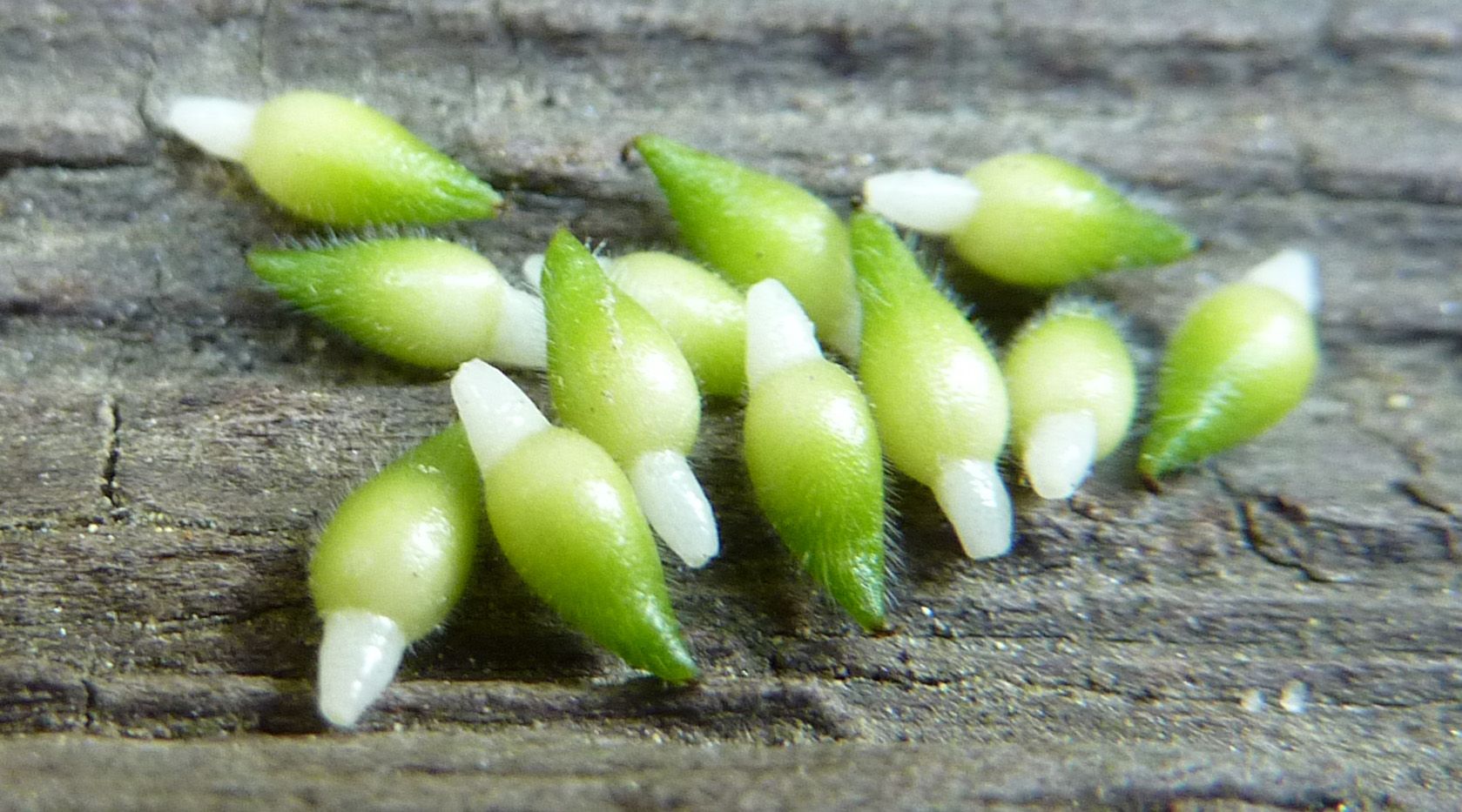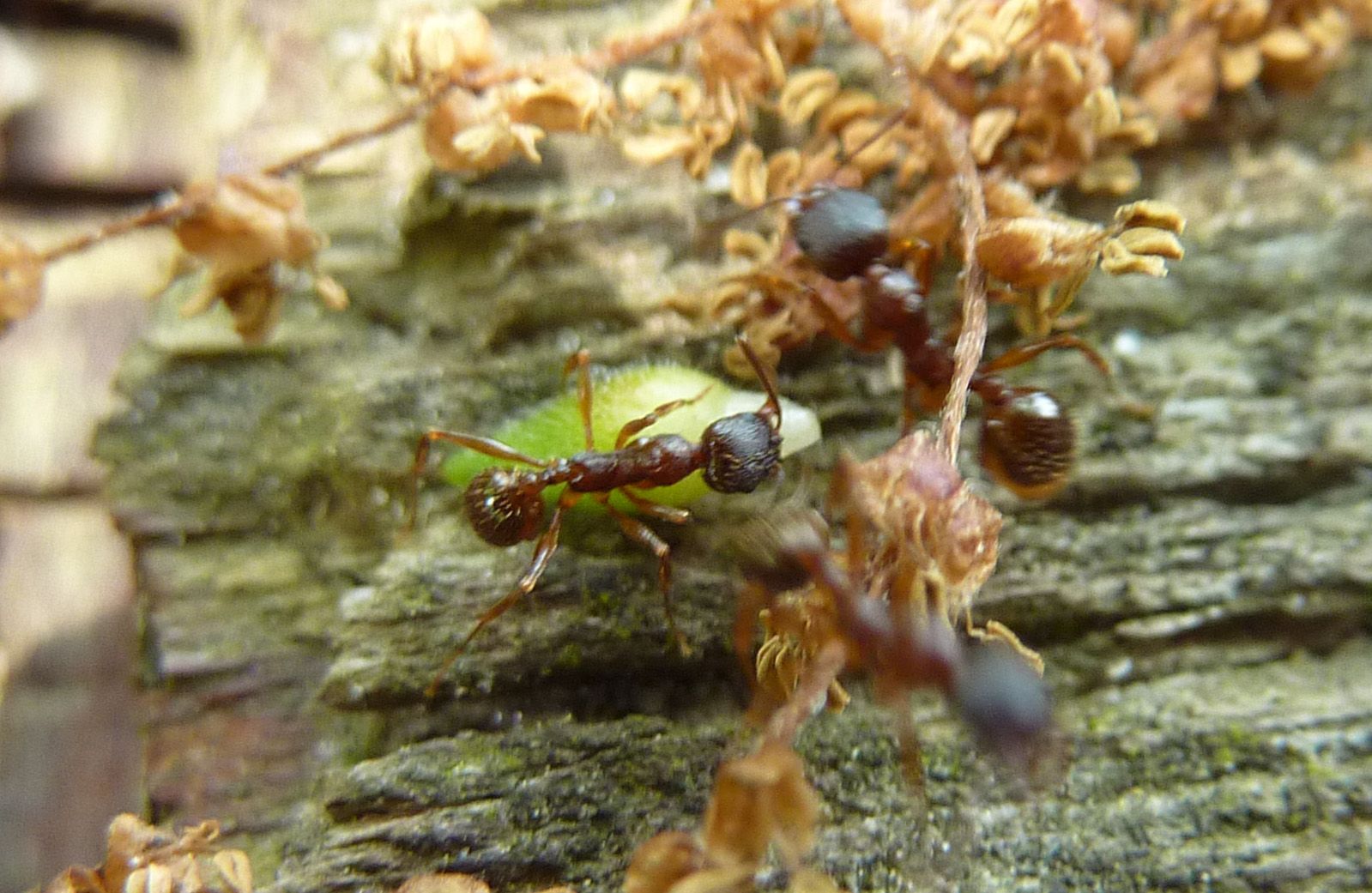So earlier today I was checking out the Hepatica and uhh... that little spike ball that grew where the flower was fell apart.
For some reason in my mind I was thinking each spike would open up as we see in violets and there would be the seeds inside. As it turns out, each of the spike point is a seed connected by a pinch of elaiosome found at the inner tip.
Elaiosome is a dead indicator of Myrmecochory, seed dispersal by ants. So naturally I took a pinch or two of seeds to put them by ants and see what they'd do.
I tried really hard to get this to work but failed each time. And I don't know why. Each time the ant would inspect the seed and lose interest completely after only a few licks. Aphaenogaster should be perfect at doing this but even they didn't care for the seeds. Wondering foragers out on patrol walked right over them. I even disturbed a colony later to see if I could get the ants to do something to the seeds. The result is pictured above but it's a misleading photo.
Here an opportunistic Nylanderia flavipes just walks right over three good seeds. The pockets of elaiosome rival the size of the ant itself. Formica, Camponotus, Crematogaster all had the same result.
The only ant that I found to have any interest in these seeds was the invasive Tetramorium species E. and even then I'm pretty sure they were more interested in the seed part than the elaiosome. The pavement ant clearly had more interest in the non-elaiosome side than and was trying to drag the seed home.
I didn't harvest all of the seed heads, and ended up planting the ones I did. I'm thinking they might not have been mature yet. However, they did seem to fall right off the plant with only a very light touch. I'll try again in two weeks if they're still there, but I might as well plant the rest from the flower heads I did disturb. The elaiosome connecting the seed to the plant might dry out.




